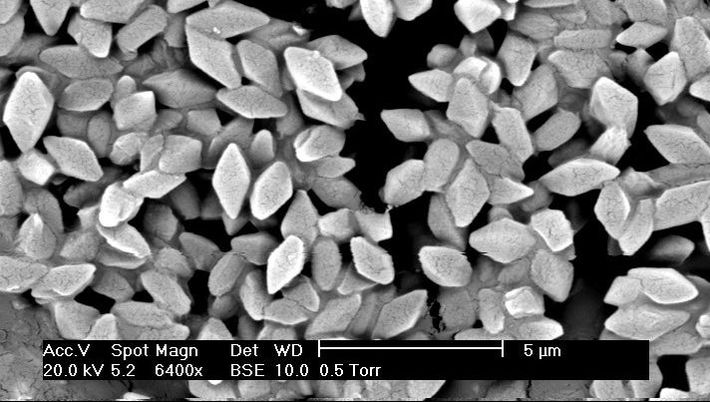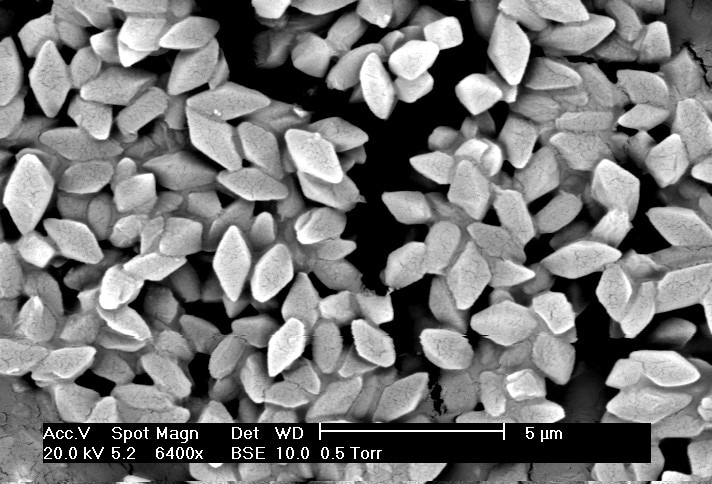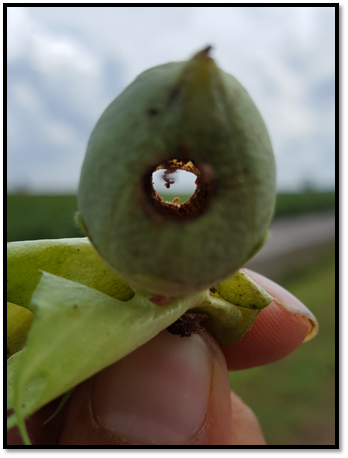|
Transgenic Bt crops have been a very successful tool for managing various insect pests in field crops. However, like all pest management strategies, they have both pros and cons. Dr. Dominic Reisig, from North Carolina State University, discusses the challenges of managing resistance against Bt crops, using the example of Helicoverpa zea, an important pest of both corn and cotton. Genetically engineered Bt crops have become an increasingly important tool for managing arthropod pests in field crops. Last year, they accounted for 79% of the corn and 84% of cotton planted in the United States (USDA 2016). Dr. Dominic Reisig, an associate professor and extension specialist at the North Carolina State University, is currently studying the benefits and concerns associated with the widespread adoption of Bt technology. Bt crops are plants which have been genetically modified to contain genes for insecticidal protein crystals (Cry toxins) from the soil bacterium, Bacillus thuringiensis (“Bt”). Cry toxins have been extensively tested for their effects on humans and have been shown to be harmless to people. Their mode of action specifically targets insect guts and certain Cry toxins can be very specific to known pests (Ibrahim et al. 2010). They are expressed in the tissue of plants throughout the plant’s entire life, creating a highly focused pest management option that significantly reduces both pest abundance and the need for insecticide application. With the advent of Bt crops, there has been a reduction in the amount of insecticides applied in a number of crops, particularly corn, soybeans, and cotton. At the same time, growers have also seen increases in their yield, particularly in areas with high pest pressure. Bt crops have also lead to increases in ecosystem services from beneficial insects, including both pollinators and natural enemies, due to the reduction in pesticide use. Along with these benefits, there are negative effects associated with using Bt crops, including an increase in non-target pests. There are a number of agricultural pests that are unaffected by Cry toxins, including insects with piercing-sucking mouthparts like stink bugs. A reduction in the number of insecticide sprays in Bt crop systems has allowed populations of these non-target pests to build up. Among the primary concerns about Bt crop usage is the development of resistance by pests like the corn earworm (Helicoverpa zea), a moth which is a pest of corn and cotton, both important Bt crops in the US. There are three main strategies used to prevent or delay the development of resistance to Bt crops. The first is planting a refuge, which is a part of a field that is planted with non-Bt seed. These non-Bt plants will sustain insect pests that are susceptible to Cry toxins that can mate with resistant individuals to produce offspring with less or no resistance, preventing the resistance trait from building up in the population. However, Dr. Reisig conducted surveys in North Carolina in which he found that 40% of corn growers do not plant a refuge; thus, this strategy is not practically applied. The second major strategy to prevent resistance is to use high enough doses of a toxin to kill most of the individuals in a population. This strategy prevents the build up of resistance by placing the dose of the toxin too high for insects to overcome in a short period of time. However, a study conducted in the 1990’s found that the Cry1Ab protein (the first Bt protein inserted into corn) was present at a relatively low dose for H. zea, only killing ~50% of individuals. Dr. Reisig repeated this experiment and found that the effectiveness of Bt corn against H. zea has decreased even further (Reisig and Reary-Jones 2015). It is now known that H. zea has developed resistance against Cry1Ab. Here again, a good theory does not make it into practice. Dr. Reisig did find however that while Bt corn does not directly kill H. zea, it does cause decrease in pupal weight, and is carrying out experiments to understand the implications for managing H. zea. The final major way to manage resistance is stacking (or “pyramiding”) multiple Bt proteins together into a single plant, which may have an additive or multiplicative effect. However, recent surveys suggest that H. zea is now also developing resistance to these stacked traits as well. As current resistance management strategies are not effective for H. zea, or in the case of planting a refuge, responsibly adapted, there is concern that Bt resistance in H. zea will continue to spread. Although this pest does not cause significant yield losses in corn, it is economically damaging to cotton. Dr. Reisig has found that H. zea larvae are sensitive to the presence of Bt in cotton, and try to move away from it. Since different parts of the plant express different levels of Bt proteins, larvae might preferentially feed on areas with low Bt.
Part of responsible management of any pest involves monitoring for and taking steps to mitigate resistance to control methods. The marked success of Bt crops does not circumvent this responsibility. On the contrary, it underscores our need to continue to promote responsible use of Bt so that this pest management tool will remain effective for many insect and human generations to come. Dr. Reisig’s research is invaluable to this process. If you’d like to learn more you can watch this video of his 2015 fall seminar or follow his blog posts on the NC State Extension website. References USDA. (2016). Recent trends in GE adoption. <https://www.ers.usda.gov/data-products/adoption-of-genetically-engineered-crops-in-the-us/recent-trends-in-ge-adoption.aspx> Ibrahim, M. A., Griko, N., Junker, M., & Bulla, L. A. (2010). Bacillus thuringiensis: A genomics and proteomics perspective. Bioengineered Bugs, 1(1), 31–50. http://doi.org/10.4161/bbug.1.1.10519 Resig, D., & Reary-Jones, F. P. F. (2015). Inhibition of Helicoverpa zea (Lepidoptera: Noctuidae) growth by transgenic corn expressing Bt toxins and development of resistance to Cry1Ab. Environmental Entomology. 44(4): 1275-85. Authors Aditi Dubey is a PhD student in the Hamby lab studying the non-target impacts of neonicotinoid seed treatments. Maggie Lewis is a PhD student in the Hamby lab studying interactions between spotted wing drosophila and its yeast and fungal microbes. Samuel Ramsey is a PhD candidate at University of Maryland in Dr. Dennis vanEngelsdorp’s lab researching Varroa destructor. Comments are closed.
|
Categories
All
Archives
June 2024
|
Department of Entomology
University of Maryland
4112 Plant Sciences Building
College Park, MD 20742-4454
USA
Telephone: 301.405.3911
Fax: 301.314.9290
University of Maryland
4112 Plant Sciences Building
College Park, MD 20742-4454
USA
Telephone: 301.405.3911
Fax: 301.314.9290




 RSS Feed
RSS Feed




